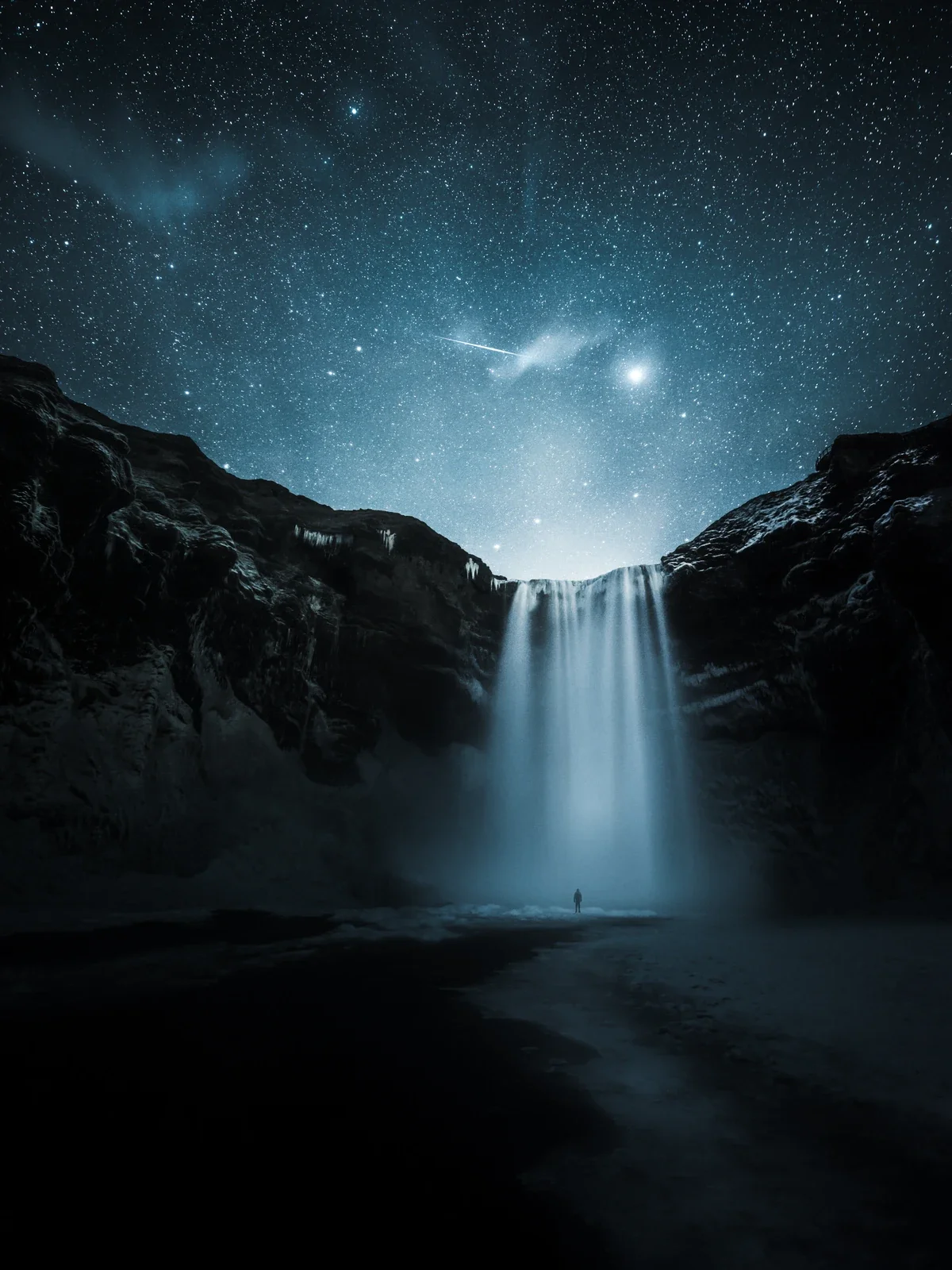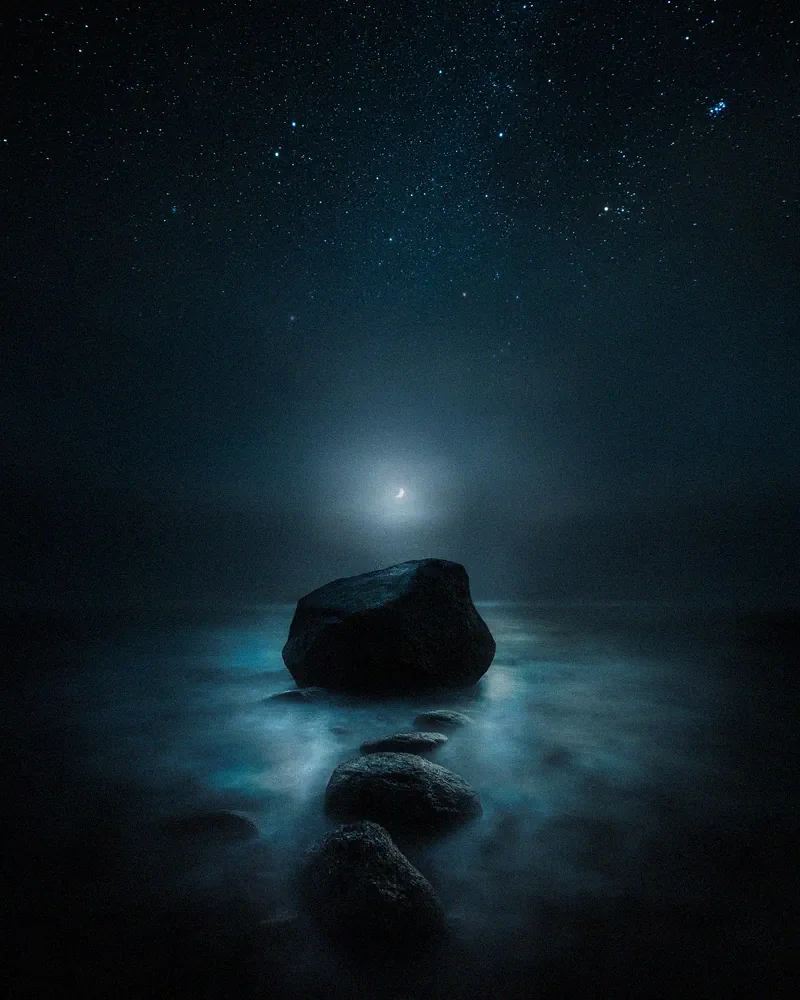Nikon Z7 mirrorless camera for landscape photography? One year Later.
I'm not sponsored by Nikon to make this blog post; these are just my thoughts of the camera after using the camera a little over a year now.
The setup I have been using for the past year:
Nikon Z7
Sony XQD 120 GB
Nikkor S 24–70 mm f/4.0
FTZ-adapter
Nikkor AF-S 14–24 mm f/2.8 G ED
Sigma 20 mm f/1.4 ART
Nikkor AF-S 50 mm f/1.4 G
Nikkor AF-S 70–200 mm f/4.0 G VR
RRS Tripod & BH-40 Ball Head
The Z7 with Nikkor S 24–70 mm f/4.0
The main reason for trying the Nikon Z7 was the size factor and new features. Even though the D810 is not a heavy camera (880 g), it's almost 400 grams heavier than the Z7 (585 g) with fewer megapixels and weaker video features. The native lenses are also smaller and less heavy as the equivalent DSLR lenses. Even with the FTZ–adapter, it's much lighter, and the 24–70mm f/4 S mount lens weights only 500 grams. It will be fun to see the size and performance of the upcoming Nikkor S 14–24mm f/2.8 lens compared to the old legendary F-mount lens. The in-body stabilization, touchscreen, 45,7 MP sensor were something I wanted to try out as well.
I must admit that it took me some time to go through all the settings before I started to shoot with the camera. Once I got everything set up, the shooting was relatively easy. I got used to the electronic viewfinder rather quickly. There were a couple of changes in the button layout from the D810. The ISO-button, for instance, is moved to the right side of the camera, which makes sense, because now you don't need two hands to change the ISO settings.
The RAW image files, man they are big. I know the new Sony mirrorless cameras have more megapixels than the Z7, so it's not quite the flagship in terms of megapixels, but because I own a lot of Nikon lenses, which work perfectly with the FTZ-adapter I prefer to stick with Nikon Z7 at least until the Z8 comes out. With the 45,7-megapixel sensor, the file size is acceptable. The resolution of the RAW files is 8256 x 5504 pixels. The editing capability of the files is top-notch. The dynamic range is not as good as the D850, as I have read from some reviews, but it's near the same. I'm used to great RAW files from the D810, and to be fair, I don't think there is a massive difference between the D810 and Z7 cameras. It's not better nor worse.
For night photography, the ISO performance is good. Similar to the D810, it's nothing spectacular but not bad either. You can get decent images when you push it to ISO 8000 when exposing the shot correctly. For me, in dark situations, I tend to use the ISO 6400 with the Z7, and for daylight, sunset, and sunrise photographs, I use the native ISO 64.
I use the Nikkor S 24–70 f/4.0 when I'm taking just one lens to go. It's an excellent versatile lens with a nice focal length. However, when I'm photographing at night or landscapes, I take the trusty Nikkor 14–24 mm f/2.8 and the Sigma 20 mm f/1.4 and 70–200 f/4.0 VR lenses with me. The beautiful thing about the 24–70 f/4.0 S-lens is that it's completely silent if you care to take some videos while using the autofocus.
Nikon Z7 system usage is great, and it is decent to hold with my big hands. It's not as good as the D800 series, but the handling is still very good. Small buttons and tight spacing make it harder to operate the Nikon Z7 camera with gloves, especially in dark situations. You can't feel the buttons so well, but it's a common problem with most of the mirrorless cameras I have tested.
One small problem I have had with mine when I use it in freezing weather, -20°C or lower. Since I have only tested mine, I can't tell if it's a problem with others, and by quickly googling, it seems not to be a common problem, or maybe most people don't use it in harsh conditions… So, what's the problem? Occasionally, when used in freezing temperatures, the camera shows an error message: "cannot read the memory card," and then you have to take it out and put it in again and it usually works fine for a period of time. I have used two different XQD memory cards in the extreme weather, so it seems not to be just a memory card problem. However, the problem can occur when I shoot bursts of images in cold weather, and the camera needs time to write to the memory card. It has happened to me twice, so that none of the shots were written to the memory card, which is awful. I haven't tried the new CFexpress cards yet which were added as a supported format with the v2.20 firmware. I'll make an update when I get my hands to a CFexpress card.
What I like about the camera are the screens and overall responsiveness. You can easily flip between the back screen and viewfinder quickly and effortlessly. Battery life is nothing special, but it can hold the same batteries as the D810, so I don't have to carry two different types of batteries with me even when I bring both of the cameras on a trip. It doesn’t perform as well as the D810 obviously due to the screens. You can get over 300 shots with a single battery, and to be fair I have gone over 400 with it if I don’t shoot long exposures.
The one part of the Z7 I wish Nikon did better is the eyepiece. Since I'm pushing the camera quite firmly to my eye for more stability as I move the camera to view the image on the back screen. The rubber part of the eyepiece doesn't go back to its normal form, so the auto switch doesn't recognize that I have moved my eye from the viewfinder because it's blocking the eye detector. It isn't very pleasant. The issue happens more often in cold temperatures as well because of the rubber gets stiff.
A quick solution for this problem is to take the eyepiece out altogether. However, when it's cold outside, and you put your eye to the viewfinder without the rubber piece, it can be quite cold for your face.
So overall, what can I say? I think it's an excellent mirrorless still camera for landscape photography. The dynamic range is excellent and the overall image quality is superb. You can shoot videos with it too, but RAW video format is not supported unless you add an external solution like Atomos Ninja V. I plan to test the RAW recording as soon as I get my hands on an Atomos Ninja.
What I like about the camera:
Overall camera usage
Dynamic range & image quality
Lens options (with the FTZ-adapter)
Focusing in low light
Charging the camera with USB-C
Support for CFexpress cards (with firmware v2.20)
What I don't like about the camera
Battery life and usage in cold temperatures
Single XQD memory card slot
Issues with the eyepiece and memory cards
(Might be my camera only)
All shots below were taken with the Nikon Z7 and edited with the EPIC Presets collection.
Nikon Z7, Nikkor S 24-70 mm f/4.0 @ 24 mm, ISO 6400, f/4.0, 20 sec.
Nikon Z7, FTZ-adapter & Nikkor 14–24 mm f/2.8 @ ISO 5000, 14 mm, f/2.8, 25 sec.
Nikon Z7, Nikkor S 24-70 mm f/4.0 @ ISO 100, 70 mm, f/4.0, 1/100 sec.
Nikon Z7, Nikkor S 24-70 mm f/4.0 @ ISO 64, 24 mm, f/8.0, 1/125 sec.
Nikon Z7, Nikkor S 24-70 mm f/4.0 @ ISO 100, 24 mm, f/9.0, 1/160 sec.
Nikon Z7, Nikkor 14–24 mm @ ISO 64, 14 mm, f/8, 0,5 sec.
GET THE LATEST
CONTENT FIRST
If you like this post. Subscribe to be the first to receive fresh new tutorials straight to your inbox!



